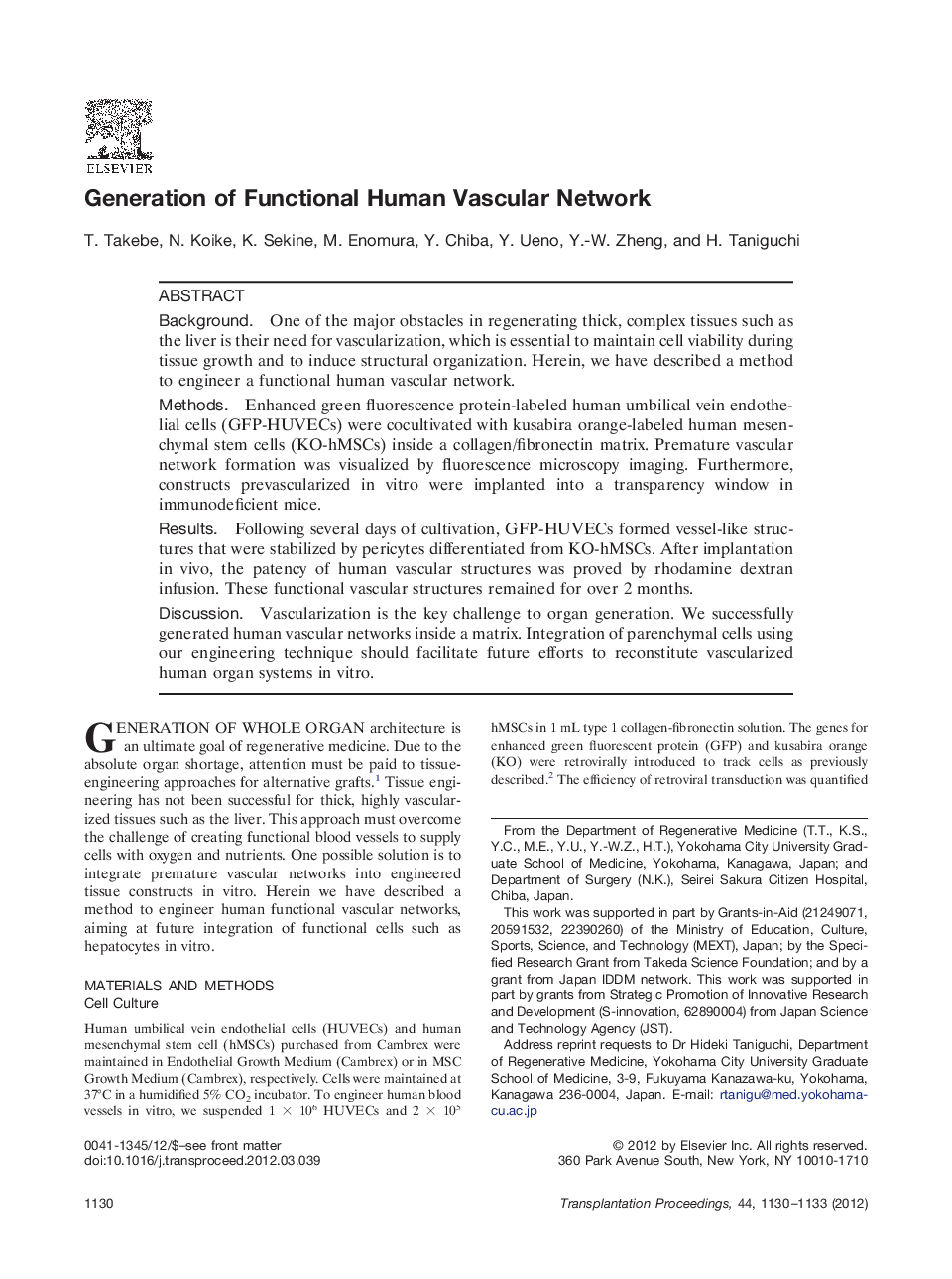| Article ID | Journal | Published Year | Pages | File Type |
|---|---|---|---|---|
| 4256883 | Transplantation Proceedings | 2012 | 4 Pages |
BackgroundOne of the major obstacles in regenerating thick, complex tissues such as the liver is their need for vascularization, which is essential to maintain cell viability during tissue growth and to induce structural organization. Herein, we have described a method to engineer a functional human vascular network.MethodsEnhanced green fluorescence protein-labeled human umbilical vein endothelial cells (GFP-HUVECs) were cocultivated with kusabira orange-labeled human mesenchymal stem cells (KO-hMSCs) inside a collagen/fibronectin matrix. Premature vascular network formation was visualized by fluorescence microscopy imaging. Furthermore, constructs prevascularized in vitro were implanted into a transparency window in immunodeficient mice.ResultsFollowing several days of cultivation, GFP-HUVECs formed vessel-like structures that were stabilized by pericytes differentiated from KO-hMSCs. After implantation in vivo, the patency of human vascular structures was proved by rhodamine dextran infusion. These functional vascular structures remained for over 2 months.DiscussionVascularization is the key challenge to organ generation. We successfully generated human vascular networks inside a matrix. Integration of parenchymal cells using our engineering technique should facilitate future efforts to reconstitute vascularized human organ systems in vitro.
